In her TALK "Prince Henry’s Sweet Tooth" Dr. Pennell presents background information on the manuscript, the banqueting house at Charlton House, its builder Sir Adam Newton (Prince Henry’s tutor) and a detailed description of each recipe group on the pages relating to banquets.
For this post, the recipe catagories from the RECIPE MANUSCRIPT are in italics. I've collected many dining images over the years. Images without a date are from the first painting, by Georg Flegel, 1620. Click to enlarge images.
Marchpanes - 3 marzipan centerpieces
Rock Candies - figge, allmons, marigolde … 1625
Comfeits - Allmond (16d), synamon, ginger (20d) ambergris, muscadines (4s) - prices from manuscript [£1 -> £312 now]
Dryed Suckette - Sucket; Oringes yealowe, Greene figge, green peaches 1627 Marmallets - Marmalade, Membrillo; quinces (white or red), pippins.
Dryed pasts - Pastes; quinces, apricot, pippins, violets 1619
Past de Jaune (Pate de Fruits, Fruit pastes) - apples, plombs, potatoes, gourd
Preserves - damsons, barberries, lemons. 1627
Jellies of sevall collours, Gellyes
Types of sugars, oyles
French Mackeroones, Naples biskett... - Cakes, biskets (cookies)
Partee goold - to gild cakes; biskets c1619 Waferes - Wafers 1630s Bakemeates 1627 Conseits - Conceits, subtleties (Marchpane shaped to look like a food, these are the only fruit on high pedistal; or may be real)
Serrops - Syrups All theis necessaries you may buye at the Syne of the George att the Stocke in London
THE NAMES OF ALL thinges necessary for a banquet. 1596
Suger. Pepper. Saffron. Anniseedes. Cinamon. Nutmegs. Saunders. Coliander. Licoras. All kinde of Cumfets. Orenges. Pomegranet. Torneseli. Prunes. Currans. Barberies conserued. Peper white and browne seedes. Lemmons. Rosewater. Raisins. Rie flowre. Ginger. Cloues and Mace. Damaske. water. Dates. Cherries conserued. Sweete Orenges. Wafers. For your Marchpanes seasoned and vnseasoned, Spinndges.
The Good Housewife's Jewell, 1596 HERE
The Ordering of Banquets 1615
I will now proceed to the ordering or setting forth of a banquet; wherein you shall observe that the marchpanes have the first place, the middle place, and the last place; your preserved fruits shall be dished up first, your pastes next, your wet suckets after them, then your dried suckets, then your marmalades and goodinyakes, then your comfits of all kinds; next, your pears, apples, wardens baked, raw or roasted, and your oranges and lemons slices; and lastly your wafer cakes.
Markham, Gervaise. The English Huswife, 1615
"Prince Henry’s Sweet Tooth" taped talk about a fabulous manuscript is HERE (1hr 25min).
The online recipe manuscript "Henry Frederick, Prince of Wales (1594-1612) manuscript volume of recipes and medical remedies c1610", number LMC2435 is at Lilly Library. U of Indiana.
Four page list of banquet foods p462-67, with most of the over 400 pages dealing with recipes for banquet. HERE
To make Rughe Redd Marmaladd of Quinces that shall look as Redd as a Ruby – otherwise called Lamp Marmaladd p86 HERE
To make Quiddemocke of Quinces a Rubie Colour to print with moulds p114
 Details from other paintings to compare with Flegel's c1620 painting
Details from other paintings to compare with Flegel's c1620 paintingRoasted nuts, c1620
Roasted nuts in bowl 1610 (perhaps to keep warm?) Marmallets and boxes 1620 Dried fruits, nuts and cheese 1610 Dried fruits & almonds 1612 Pomegranet - Pomegranate 1612 Fruit in use, knife and holder 1623 Cantelope to eat. Paper cones in upcoming post Butter c1615 Banqueting trenchers. Detailed article describing reading the message on each plate HERE Rectangular wooden trenchers (under plate) Trenchers in box. Ashmolean Mus UOx c1600 Rectangular trenchers, late 15th Banquetting fruit and conceited dishes 1615
There are a world of other bak'd Meats and Pyes, but for as much as whosoever can do these, may do all therest, because herein is contained all the art of Seasonings, I will trouble you with no further repetitions, but proceed to the manner of making Banqueting stuff, and coinceited dishes, with other pretty and curious secrets, necessary for the understanding of our English House-wife: for albeit, they are not of general use, yet in their due times, they are so needful for adornation, that whosoever is ignorant therein, is lame, and but the half part of a House-wife.
How to make Cinamon sticks
To make most artificial Cinamon sticks, take an ounce of Cinamon and pound it, and half a pound of Sugar: then take some gum Dragon, and put it in steep in Rose-water: then take thereof to the quantity of a Hazel-nut, and work it out and print it, and roul it in form of a Cinamon-stick.
Markham, Gervase. The English Huswife. London: 1615
A way to make Sugerplate both of colour and taste of any flower 1609
Take violets, and beat them in a mortar with a little hard sugar; then put into it a sufficient quantitie of Rose-water; then lay your gum in steep in the water, and so work it into paste: and so will your paste be both of the colour of the violet, and of the smell of the violet. In like sort you may worke with Marigold, Cowslips, Primroses, Buglosse, or any other flower.
Plat, Hugh. Delightes for Ladies. London: 1609
SOURCES AND FURTHER INFORMATION
A few days ago, the Flegel painting was posted on the ALHFAM historic foodways Facebook page and I used it instead of the horizontal banquet table painting. Thus many of the images were switched, so there may be some difference in the Sources. There are still some period images to be found, such as Fruit pastes (Pate de Fruits), Jellies, and Marchpane centerpieces.
Art
Flegel, Georg. Still life with parrot. c1620. German. Alte Pinakothek, Munich
Baugin, Lubin. Le Dessert de Gaufrettes. 1630s (Wafers). French. Louvre
Beert, Osias the elder. Dishes with Oysters… c1620 Flemish. NGA/DC (nuts)
Binoit, Peter. Still life with letter pastry. c1615 (cookies) German. Groninger Museum
Chronique d'Angleterre v3 (metal trenchers) 15th
Claesz Pieter. Still life. 1627 Dutch. Rijksmuseum, Amsterdam
Es, Jacob. Still Life with Oysters, Fruit and Pastry. 1619 Flemish. Museum of Fine Arts, Ghent
Flegel, Georg. Still life (hard sugared fruit) c1625. The Met, NYC
Massialot, François. Le Cuisinier roïal et bourgeois. 1691. (table) French cookbook
Peeters, Clara. Still life w gilt gobblet c1612 Flemish (fruits) private
van Schooten, Floris. Still Life with Ham. c1615 (butter) Dutch. Kroller-Muller Museum
Slow Food: Dutch and Flemish Meal Still Lifes 1600-1640. Quentin Buvelot. The Hague: 2017
Readings
What, Exactly, Was the Tudor and Stuart Banquet? (about this 1610 manuscript) by Stephen Schmidt on Manuscript Cookbooks Survey HERE
Trenchers: Speaking plates: text, performance, and banqueting trenchers in Early Modern Europe. Victoria Yeoman. Renaissance Studies Nov 2017 HERE
Blog posts:
Butter slices 17-19th cen HERE, 16 & 17th cen Dutch & Flemish oval shapes HERE, Butter, many posts HERE
Dining HERE, HERE
Wafers HERE
Roasted chestnut sellers - Le marchand de marrons HERE
UPCOMING TALKS ON ROYAL VISITS, VERMEER AND DIGITAL COLLECTIONS
Researchers are really fortunate (particularly when physical access is limited, as now during the lockdowns) to have so many manuscripts and old books accessable through digital collections.
Jan 26 Wed 11-12:30 Cruising, Curious & Casual? What user studies can tell us about the use of Digital Cultural Heritage Collections.HERE TAPE HERE
Jan 26 Wed 12:15 Monarchy on the Move: Royal Visits, Patronage, and Commemoration. Paige Emerick. IHR HERE no tape
Feb 2 Wed 7:30 The Art of Food in the Dutch Golden Age. Kathryn Lederhause. CHEW Culinary History Enthusiasts of Wisconsin HERE TAPE HERE
Fe 3 Thu 11AM The Art of the Artichoke. Dr. Demet Guzey. Context Travel $36.50 HERE
Feb 22 Tue 9AM Johannes Vermeer’s Perfect Painting. The Milkmaid (1654–58). Dr. Peter Ross. Guildhall Library, London HERE
CALENDAR OF VIRTUAL FOOD HISTORY TALKS HERE
©2022 Patricia Bixler Reber
Researching Food History HOME
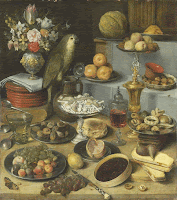






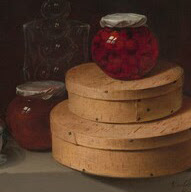
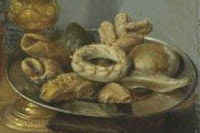





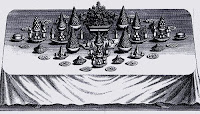


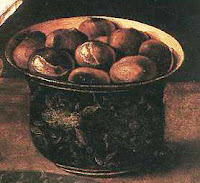
















No comments:
Post a Comment